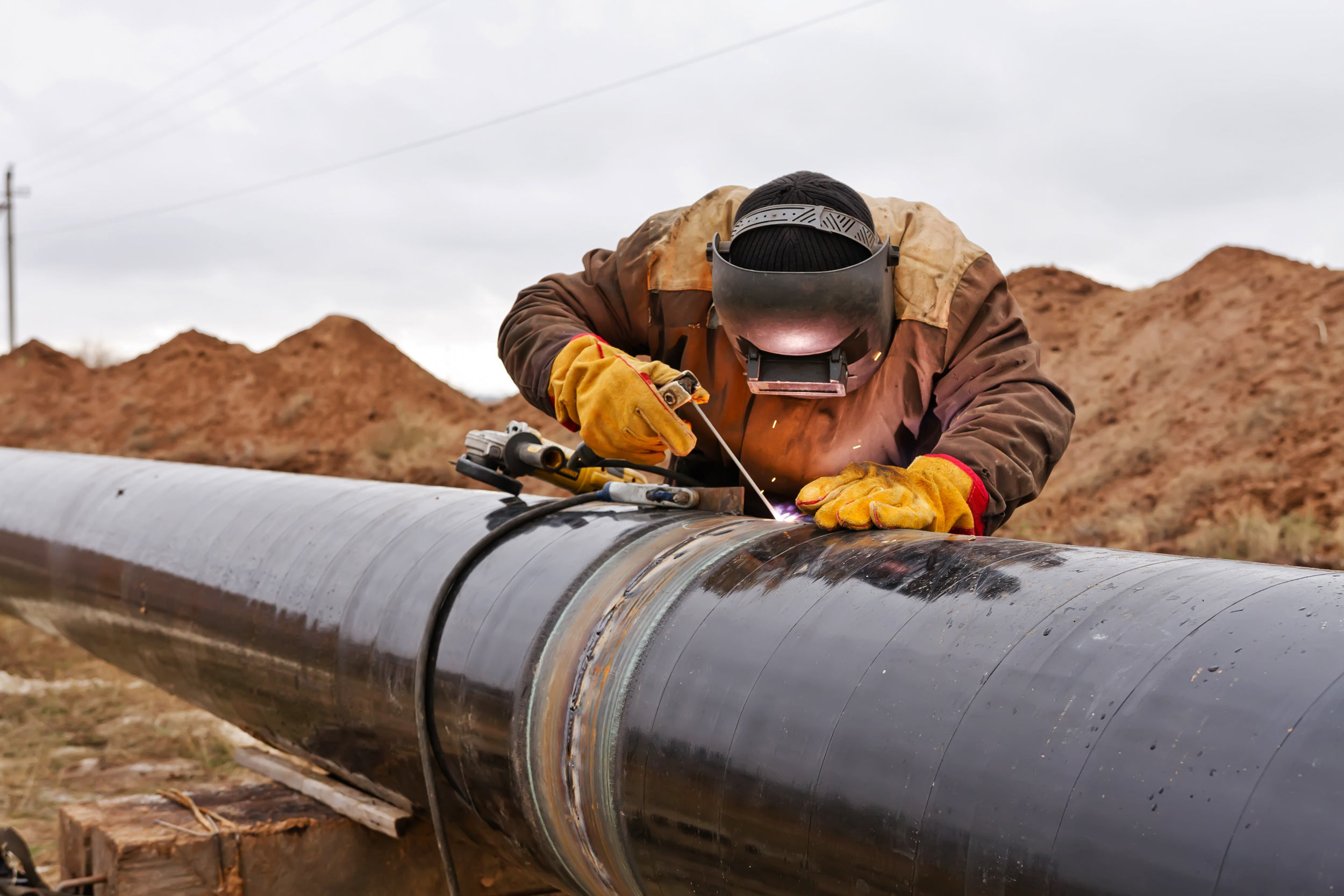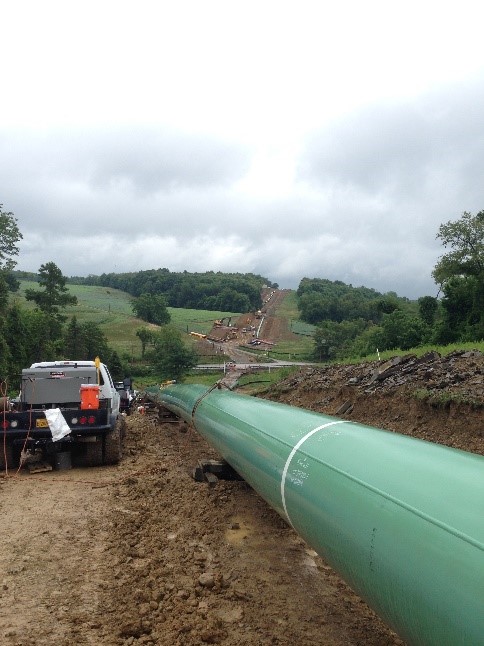Emergency Planning With Creek Pipe contact Info Ready
What You Must Learn About Pipe Trenching Solutions: A Detailed Introduction of Available Options
Pipe trenching services are important for the installment and maintenance of below ground energies. They involve various techniques customized to particular demands and environments. Comprehending these approaches is essential for reliable task execution. Each alternative presents its own collection of benefits and difficulties. As the need for efficient energy management boosts, recognizing what to take into consideration when selecting a trenching solution becomes necessary. What elements should one focus on to guarantee success?
Recognizing Pipe Trenching: What It Is and Why It Matters
Although frequently forgotten, pipe trenching is a vital process in numerous building and construction and utility jobs. This strategy involves excavating slim trenches to promote the installation of pipelines for water, gas, sewage, and telecoms. The significance of pipeline trenching depends on its duty in ensuring that these vital systems are appropriately integrated into facilities, allowing the safe and reliable shipment of required services.Proper trenching is essential for keeping the stability of pipelines and minimizing threats connected with dirt erosion and collapses. It likewise allows for effective inspections and upkeep of below ground energies. Furthermore, comprehending the regional guidelines and environmental considerations is vital, as inappropriate trenching can bring about expensive delays and legal issues. Eventually, pipe trenching serves as the fundamental step that sustains different building and construction undertakings, making it a considerable aspect of modern-day facilities development.
Typical Trenching Techniques for Underground Energies
In the domain of below ground utilities, various trenching approaches play a crucial role in installment and upkeep - Creek Pipe reviews. The open-cut trenching approach, directional boring method, and hydro excavation process each deal special advantages relying on the certain job requirements. Recognizing these methods is essential for efficient and reliable utility administration
Open-Cut Trenching Approach
Open-cut trenching is a commonly used technique for setting up below ground energies, particularly when the deepness and size of the trench permit efficient accessibility. This technique involves excavating a trench along the proposed path of the utility, offering direct exposure and access for installment. It is particularly beneficial for tasks that require substantial excavation, as it assists in fast setup and assessment. However, it also demands cautious preparation to reduce interruption to the surrounding location, including web traffic and existing structures. Open-cut trenching is most reliable in open spaces where the soil problems agree with, but it might be restricted in city environments due to the presence of existing utilities and various other below ground challenges.
Directional Boring Technique

Hydro Excavation Process
Just how does hydro excavation attract attention among common trenching methods for below ground energies? Hydro excavation uses high-pressure water and vacuum modern technology to securely remove soil, enabling for exact excavating around delicate below ground energies. This approach decreases the threat of destructive existing infrastructure compared to conventional mechanical excavation. By utilizing water to loosen the soil, hydro excavation supplies a much less intrusive technique, lowering the possibility for dirt compaction and making sure a cleaner worksite. Furthermore, the procedure boosts exposure during excavation, improving overall accuracy and efficiency. Hydro excavation is specifically advantageous in urban areas where energy lines are largely loaded, making it a favored choice for specialists concentrated on security and precision in underground tasks.
Benefits of Trenching Solutions
While different techniques exist for setting up underground utilities, trenching solutions offer distinctive benefits that make them a recommended choice for many tasks. One substantial advantage is the cost-effectiveness of trenching, as it typically requires less specialized equipment compared to options like hydro excavation. This why not try here usually causes reduced labor and functional costs. In addition, trenching can suit a large range of utility kinds, including water, drain, and gas lines, giving convenience for contractors.Moreover, trenching permits efficient accessibility to multiple lines in a single excavation, minimizing disturbance to the surrounding location. The process also makes it possible for exact setup and repair, which is essential for adhering to governing standards and making sure lasting reliability. Eventually, trenching can be executed relatively rapidly, decreasing job timelines and enabling for faster service remediation. These advantages collectively make trenching solutions a functional option for numerous below ground energy tasks.
Drawbacks and Difficulties of Trenching
Regardless of the many benefits of trenching services, there are noteworthy downsides and obstacles that must be thought about. One substantial obstacle is the potential for soil instability, which can result in collapses, presenting threats to workers and equipment. Furthermore, trenching can interfere with existing energy lines, necessitating cautious preparation and coordination to avoid service disruptions. The procedure can likewise be time-consuming, specifically in metropolitan locations where area is minimal and access is restricted. In addition, trenching might call for extensive licenses and governing compliance, including complexity and possible hold-ups to tasks. Environmental concerns, such as dirt disintegration and damage to local communities, can develop from incorrect trenching practices. The expenses linked with trenching, consisting of labor and devices, can escalate if unexpected issues occur during the job, making it essential for stakeholders to evaluate these obstacles versus the benefits when considering trenching services.
Secret Elements to Consider When Picking a Trenching Service
Choosing the best trenching service can considerably affect the success of a job. Several vital factors need to be analyzed to guarantee an ideal option. First, the firm's experience and expertise in trenching operations are crucial; a well-established solution with a strong record is typically much more trustworthy. Next off, evaluating the equipment utilized is essential, as modern-day machinery can improve effectiveness and accuracy. In addition, it is significant to take into consideration the series of services supplied, consisting of excavation deepness and soil type handling, to confirm they meet specific project requirements.Another variable to testimonial is the firm's online reputation; consumer testimonials and testimonials can offer insights right into previous efficiency. Furthermore, acquiring thorough quotes that lay out prices and timelines will certainly assist in spending plan monitoring. Verifying conformity with regional laws and market criteria is crucial for staying clear of potential lawful issues. By reviewing these factors, customers can make a notified decision when choosing a trenching solution.
Safety And Security Steps in Pipe Trenching
In pipeline trenching, safety and security steps are important to making sure employee defense and site integrity. Key elements include using individual protective tools, comprehensive excavation website assessments, and distinct emergency response methods. Executing these actions substantially lowers threats connected with trenching procedures.
Personal Protective Devices
Safety and security in pipeline trenching greatly relies upon the appropriate use of individual protective tools (PPE) Employees should put on difficult hats to shield versus falling objects, as well as high-visibility vests to improve their exposure on-site. Steel-toed boots are essential for foot defense against heavy tools and products. In addition, gloves are essential for hand safety, specifically when dealing with rough or sharp items. Respirators might also be necessary in settings with dirt or harmful fumes. Eye defense, such as safety and security goggles, need to be put on to protect versus debris. Lastly, hearing protection is necessary in loud workplace. By adhering to PPE guidelines, employees can considerably reduce the threat of injury and assure a much safer trenching procedure.
Excavation Website Assessment
Appropriately examining the excavation website is a basic step in ensuring a risk-free pipeline trenching procedure. This process includes reviewing the site for prospective dangers such as below ground utilities, unstable soil conditions, and neighboring structures. An extensive evaluation enables the identification of dangers that could endanger employee safety. Additionally, verifying the dirt type and wetness levels can assist determine ideal shoring methods to avoid trench collapses. It is important to link ensure that the website is clear of particles and that appropriate signs is displayed to signal personnel of recurring operations. Routine inspections throughout next the task can also assist spot any kind of modifications in website problems, enabling prompt adjustments to precaution and job methods.

Emergency Situation Feedback Protocols
Emergency situation feedback protocols are vital in mitigating dangers related to pipeline trenching operations. These methods ensure that all employees are prepared to act quickly and effectively in emergency situations. Crucial element include routine safety drills, clear interaction networks, and designated fire escape. On top of that, first-aid kits and emergency call numbers need to be easily obtainable on-site. Trenching procedures have to additionally consist of treatments for dealing with dangerous situations, such as cave-ins or utility strikes. Training employees on recognizing possible hazards and understanding their roles throughout an emergency situation is critical. Moreover, keeping an upgraded website security plan can significantly enhance reaction effectiveness. Generally, efficient emergency preparedness promotes a much safer working environment and minimizes the effect of unanticipated occurrences.
Expense Factors To Consider for Trenching Solutions
Understanding the economic implications of trenching services is important for project preparation and budgeting. The costs linked with trenching can vary commonly based upon several aspects, consisting of project dimension, dirt kind, and depth of the trench. Labor prices frequently stand for a significant section of the total cost, as skilled operators are required for reliable execution. In addition, equipment leasing costs can add to the general spending plan, especially for specialized machinery.Site availability is another vital factor; challenging surface might necessitate extra sources, boosting prices. Allowing and regulatory conformity can additionally contribute to costs, especially in city locations where policies are stringent.Lastly, unpredicted problems, such as experiencing existing energies, can lead to unforeseen costs and delays. Because of this, acquiring thorough estimates from trustworthy trenching provider is necessary for exact budgeting and ensuring successful task conclusion.
Regularly Asked Concerns
Just how Lengthy Does a Normal Pipe Trenching Task Take?
The period of a normal pipe trenching job varies considerably based on factors such as deepness, dirt conditions, and job complexity. Typically, it can take anywhere from a few days to numerous weeks to complete.
What Equipment Is Generally Utilized in Pipe Trenching?

Are There Environmental Rules for Trenching Activities?
Environmental laws for trenching activities typically call for conformity with local, state, and federal standards. These regulations intend to minimize environmental interruption, protect water resources, and guarantee appropriate waste administration throughout excavation and installment procedures.
Can Trenching Providers Be Incorporated With Other Building Jobs?
Trenching solutions can without a doubt be incorporated with various construction jobs. By working with initiatives, efficiencies can be achieved, reducing disturbances while guaranteeing that all required facilities job is finished in a timely and economical way.
What Are Typical Soil Types Experienced in Trenching?
Common dirt kinds run into in trenching consist of clay, sand, silt, and loam. Each type presents special obstacles, influencing excavation methods and security, necessitating careful planning to guarantee secure and efficient trenching procedures.